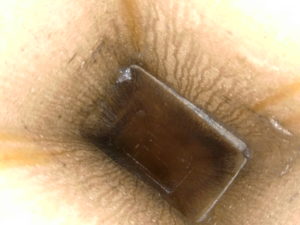People generally want to save money and cut costs everywhere they can. I do it, and I’m sure you do it, too. One of the many places that you can’t cut money is your chimney liner, or the flue. The flue is the liner inside the chimney. It’s the really gross part where all of the creosote sticks. But all things considered, the flue is much more than that. I’m going to go over the importance of a chimney flue as well as give you a little bit of the background behind who decided a flue is mandatory, and why.
In the Beginning…
Flues weren’t required in the early years. In fact, the first test to determine whether a chimney flue was needed was in the 1940s. Another test was performed in the 1980s to test the durability of an unlined chimney. The results were so alarming that researchers likened building a chimney without a liner as nearly criminal. Here are some of the findings of these tests:
The three functions of a chimney liner are protection from heat transfer to combustibles, protection from the corrosive byproducts of combustion, and optimized efficiency. The tests from the 1940s and 1980s put those functions through the wringers in order to properly determine whether people needed to pay hard-earned money to line their chimney.
The chimney liner (flue), protects the house from heat transfer to combustibles. An unlined chimney heats so quickly that it only took 3.5 hours for the adjacent woodwork to catch fire due to heat transfer. Most people use their chimney more than 3.5 hours at any given time.
Corrosive byproducts of combustion chip away at masonry chimneys, creating an unstable tower of brick. This greatly reduces the life expectancy of the chimney itself. As erosion takes place, heat transfer becomes even more dangerous to surrounding woodwork.
Fireplaces and wood burning stoves work the most efficiently when they have the proper amount of draft, a correctly sized flue, and a fire within the proper temperature range. The flue, or chimney liner, made a very noticeable difference in the efficiency of a chimney.
Flue Maintenance
Your chimney isn’t a maintenance-free house decoration that happens to serve a purpose. You wouldn’t allow your family to socialize on the deck if it had rotten structural boards, so don’t take your chances with something as important as the flue. Schedule a yearly appointment with a certified chimney sweep to ensure that your chimney and flue are working properly.
Most people schedule their chimney inspection at the same time they change batteries in the smoke detector, or do other important home maintenance activities. Don’t let this very important task fall to the wayside, your family’s health and wellbeing depend on it.

